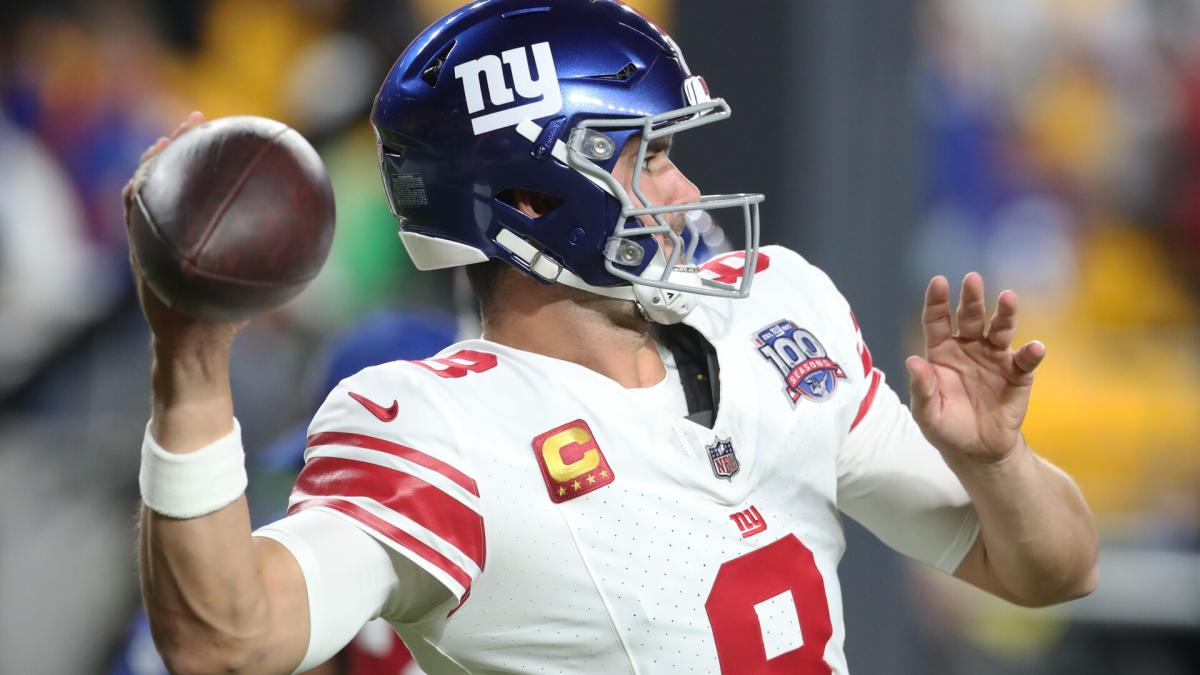
On Thursday, Fox’s Tom Brady criticized former Giants quarterback Daniel Jones for asking to be released, after he was benched for business reasons.
Brady prefaced his comments by saying this: “I don’t know how that whole situation went down. . . .”
So we did the legwork for him. Here’s what we learned, per a source with knowledge of the events.
For starters, the Giants initially wanted Jones to stay home, with pay. That’s what the Raiders did two years ago, when they benched quarterback Derek Carr to avoid a $40 million guarantee in 2023. Carr agreed.
The player has to be willing to do it; he can’t be locked out. The rule dates back to Steve McNair’s grievance against the Titans in 2006. After they drafted Vince Young, the Titans didn’t want McNair to get injured while on the premises, triggering his otherwise non-guaranteed salary. McNair and the NFL Players Association fought it, they won, and they set a precedent that teams cannot keep a player from showing up for work for non-disciplinary reasons.
There’s nothing wrong with the Giants wanting Jones to stay home. It’s the natural extension of their decision to take him out of the lineup. But the request for Jones to stay home laid the foundation for Jones eventually asking to be released.
His first choice, we’re told, was to remain active — and to help the other quarterbacks prepare to win games. When he decided not to stay home, the Giants altered his workout program, in order to minimize if not eliminate the possibility of injury. He wasn’t going to be throwing at practice, and his lifting program was significantly restricted. All in the name of keeping him healthy.
Business considerations prevented Jones from doing anything to help the team. No real practice (other than scout-team, walk-through safety), no throwing, limited lifting. He wasn’t getting ready to play, because he wouldn’t have played. He wasn’t permitted to participate in practice, because they didn’t want to risk triggering his $23 million injury guarantee for 2023.
Again, there’s nothing wrong with the Giants wanting to avoid the injury guarantee. But that helps explain Jones’s eventual decision to ask to be released.
Brady, we’re told, didn’t reach out to Jones or his representation to obtain an explanation as to why Jones asked to be released.
It’s easy for Brady to say he would have handled the situation differently, because he was never put in that situation during his 20-plus year career. What would he have done if the Patriots or Buccaneers had benched him for business reasons, asked him to go home with pay, and then kept him from practicing when he said he wanted to stay?
Also, Brady left his New England teammates in free agency after the 2019 season. After the 2021 season, he retired. Roughly a month later, he came back. In the interim, an effort was undertaken to lure him to Dolphins; it has never been suggested that Brady wasn’t on board with the plan to pair him with Sean Payton in Miami, after Brady had essentially quit on the Buccaneers. Then, during 2022 training camp, Brady left the team for more than a week.
We’ll stipulate that Brady had good reasons for every single business decision he made. So would he have wanted Greg Olsen or Tony Romo or Cris Collinsworth or Troy Aikman or Kirk Herbstreit to make assumptions during massive broadcast windows about Brady’s motivations and his actions? Or would Brady have wanted them to make a phone call or two in search of, you know, facts?
For $37.5 million per year from Fox, Brady should be expected to spend a little time getting the player’s side of the story before casting aspersions before a crowd of 38.5 million.
